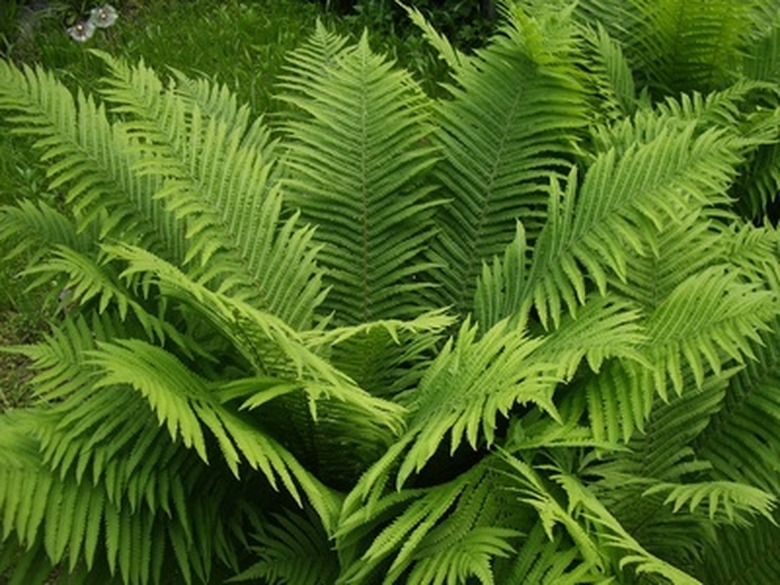List Of Non Flowering Plants
Before the evolution of flowering plants, a wide variety of plants that reproduce by spores or primitive seeds colonized the earth. Many are still widespread today, testimony to their hardiness and successful adaptation to difficult conditions. Algae and fungi are the oldest of all plants, but mosses, ferns and horsetails have been around since before the dinosaurs evolved. Gymnosperms, the conifers and other cone-bearing plants, are the most complex non-flowering plants.
Mosses And Liverworts
Known scientifically as bryophytes, mosses and liverworts are small plants that lack true roots, having only filaments that anchor them to the soil. Liverworts have flat, lobed bodies and are often found as weeds in greenhouse pots. Mosses are often branched, with small, one-cell thick leaves.
- Before the evolution of flowering plants, a wide variety of plants that reproduce by spores or primitive seeds colonized the earth.
- Algae and fungi are the oldest of all plants, but mosses, ferns and horsetails have been around since before the dinosaurs evolved.
Lichens
Lichens are the product of a symbiotic, mutually beneficial, relationship between a fungus and an alga or blue-green bacterium. The fungus provides structure, the alga or bacterium makes food using photosynthesis. The partnership has produced a wide variety of lichens, found from bare rock to rain forests and arctic cold to hot deserts.
Ferns
Ferns usually have feather-like fronds, though some have leathery, strap-shaped leaves. They reproduce by spores borne on the underside of the leaf surface, though many types may also extend their area by runners. Though usually associated with moist woods, some ferns inhabit rocky or desert areas.
Horsetails
Horsetails have jointed stems, sometimes with whorls of leaves at each node. The spores are born in cone-like structures at the tips of some of the stems.
- Lichens are the product of a symbiotic, mutually beneficial, relationship between a fungus and an alga or blue-green bacterium.
Conifers
Conifers are the tallest and most substantial of the non-flowering plants, including redwoods, pines, firs and spruce. They bear seeds protected within a cone and have needle-like leaves. All are wind-pollinated. The cones and the woody trunk that contains a vascular system of tubes that transport water and nutrients allow conifers to inhabit drier areas than mosses, ferns and horsetails.
Cycads
Cycads look, superficially, somewhat like ferns but have stiff, leathery leaves and short trunks. Some are known as "sago palms," but are unrelated to true palms. They are actually more closely related to conifers, having true seeds borne on seed bearing leaves. The stems, however, are mainly made up of storage tissue rather than true wood.
- Conifers are the tallest and most substantial of the non-flowering plants, including redwoods, pines, firs and spruce.
- They are actually more closely related to conifers, having true seeds borne on seed bearing leaves.
Ginkgo
A living fossil, a relic of 270 million year old forests, the Ginkgo is a single genus of trees most closely related to the cycads. Ginkgo biloba, the single species found in the northern hemisphere, is native to a small area of China, while less than ten species are found in the southern hemisphere. It is often called "maidenhair tree" from the fan shape of the leaves, similar to the maidenhair fern. There are separate male and female trees, with the female bearing a foul smelling fruit. Only male trees are commonly sold.
